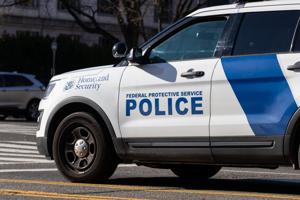
News
November 13, 2025
Photos, video, protests — homeland security tightens rule on anti-ICE activities
This article was produced by Capital & Main. It is published here with permission.
Homeland Security is implementing stricter rules regarding protests and demonstrations near Immigration and Customs Enforcement (ICE) facilities, a move that has sparked outrage and renewed debate over freedom of speech and government oversight. The policy change, detailed in a recent report by Capital & Main, aims to curtail activities deemed to disrupt ICE operations or pose a security risk.
The new guidelines outline specific zones around ICE buildings where protests are significantly restricted. These zones, which are often much larger than the immediate vicinity of the buildings, can now be subject to stricter enforcement, including potential arrests for activities previously considered protected under the First Amendment. The Department of Homeland Security (DHS) argues the enhanced measures are necessary to ensure the safety of ICE personnel and the uninterrupted execution of their duties. They cite instances of alleged harassment, vandalism, and obstruction of access to ICE facilities as justification for the tightened regulations.
However, civil rights advocates and immigration activists are condemning the policy as a blatant attempt to silence dissent and suppress criticism of ICE's controversial practices. They argue that the broad scope of the restricted zones and the vague definition of "disruptive activity" could easily be used to stifle legitimate protests and chill free speech. Concerns are mounting that the new rules will disproportionately impact immigrant communities and their allies who regularly organize demonstrations against ICE policies, such as family separations and deportations.
Capital & Main's investigation highlights the potential for abuse, noting that the policy lacks clear safeguards to prevent the targeting of peaceful protesters. The report includes accounts of demonstrators who have already experienced increased scrutiny and intimidation from law enforcement during recent protests near ICE facilities. Photographs and video footage obtained by Capital & Main allegedly show instances where protesters were met with an aggressive response from authorities, even when engaging in non-violent forms of demonstration.
The controversy surrounding the tightened rules is escalating, with legal challenges anticipated. Critics are demanding greater transparency and accountability from DHS regarding the implementation and enforcement of the policy. They are also calling on lawmakers to intervene and ensure that the rights of protesters are protected. The debate over the balance between national security and freedom of speech is once again at the forefront, raising fundamental questions about the role of government in regulating dissent.
The new guidelines outline specific zones around ICE buildings where protests are significantly restricted. These zones, which are often much larger than the immediate vicinity of the buildings, can now be subject to stricter enforcement, including potential arrests for activities previously considered protected under the First Amendment. The Department of Homeland Security (DHS) argues the enhanced measures are necessary to ensure the safety of ICE personnel and the uninterrupted execution of their duties. They cite instances of alleged harassment, vandalism, and obstruction of access to ICE facilities as justification for the tightened regulations.
However, civil rights advocates and immigration activists are condemning the policy as a blatant attempt to silence dissent and suppress criticism of ICE's controversial practices. They argue that the broad scope of the restricted zones and the vague definition of "disruptive activity" could easily be used to stifle legitimate protests and chill free speech. Concerns are mounting that the new rules will disproportionately impact immigrant communities and their allies who regularly organize demonstrations against ICE policies, such as family separations and deportations.
Capital & Main's investigation highlights the potential for abuse, noting that the policy lacks clear safeguards to prevent the targeting of peaceful protesters. The report includes accounts of demonstrators who have already experienced increased scrutiny and intimidation from law enforcement during recent protests near ICE facilities. Photographs and video footage obtained by Capital & Main allegedly show instances where protesters were met with an aggressive response from authorities, even when engaging in non-violent forms of demonstration.
The controversy surrounding the tightened rules is escalating, with legal challenges anticipated. Critics are demanding greater transparency and accountability from DHS regarding the implementation and enforcement of the policy. They are also calling on lawmakers to intervene and ensure that the rights of protesters are protected. The debate over the balance between national security and freedom of speech is once again at the forefront, raising fundamental questions about the role of government in regulating dissent.
Category:
Politics